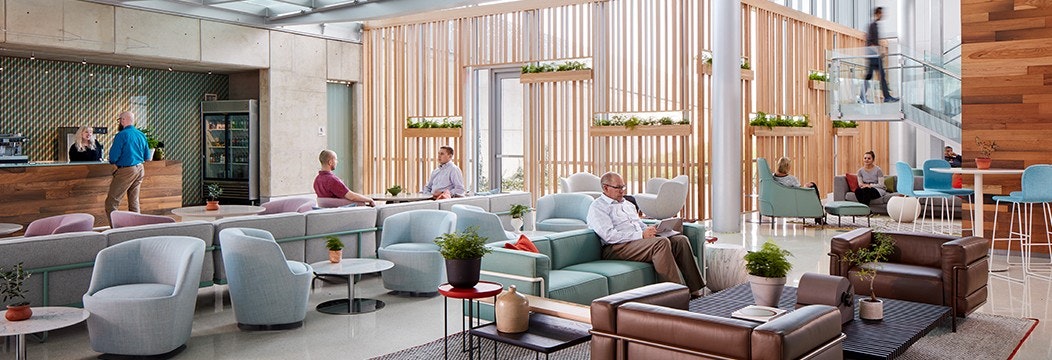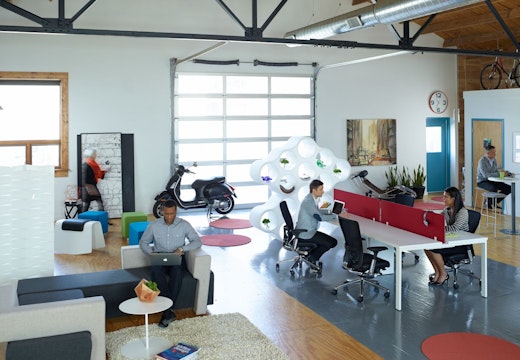Alternative workplace strategies: now it’s all about the people
As workplace priorities change, so does organisational strategy. A new report by Haworth, Advanced Workplace Associates, and Global Workplace Analytics reflects on how alternative workplace strategies have evolved over the past decade
Alternative workplace strategies are defined as ‘a combination of non-traditional work practices, settings and locations that supplement or even replace traditional offices’, according to a new report produced by Haworth, Advanced Workplace Associates and Global Workplace Analytics.
Of the 142 companies surveyed in the report, more than 90 per cent claimed they have an alternative workplace strategy in place. But with new ways of working evolving so rapidly, how do these strategies stay relevant in the workplace?
Important findings from the report demonstrate the value in implementing relevant alternative strategies and identify who the key players are. This research highlights continuous benchmarking of workplace strategy and practices, and has been running since 2008.
New drivers of change
The report has traced a significant shift over its 10 years of research – from a sustainability focus to a people focus. In 2018 the research found that the top drivers of workplace change include productivity, collaboration and work-life balance, while sustainability has taken a back seat.
This shows a shift in priorities for organisations. Whereas a few years ago, saving money was the end goal, today it is people and their productivity and behaviour in the office. This shift may be a result of global recognition that employees are a company’s biggest asset and an investment in them ultimately means a return on investment in the form of productivity and loyalty.
The shift to internal mobility
Despite predictions that the physical office will become obsolete as work becomes more flexible and technology more sophisticated, the physical infrastructure of the office holds a stronger position than ever in workplace strategy.
In 2018 there is a greater understanding that bringing people together has value, and that mobility and remote working is now just a way of life. The initial reaction to this change was that people would flee the office, but instead people still come to the office – with a twist. Instead of heading to their assigned seat that is littered with personal artefacts collected from years of sitting at the same desk, they find a seat that suits the type of work they want to carry out at that time.
The report coins this behaviour ‘internal mobility’ – the agile and flexible movement throughout an office that accommodates different needs of employees. The report found that internal mobility has almost doubled since 2008, yet external mobility has remained flat.
Who is in charge?
While many organisations would argue that involving employees in the planning of alternative workplace strategies is key to the success of its implementation, surprisingly the report suggests not. The trend towards involving employees in planning has reversed from 64 per cent in 2009, to 36 per cent in 2017. But if employees aren’t driving these programmess, who is?
Cue the ever-important role of leadership. Executive endorsement of alternative workplace programmes has more than doubled from seven per cent to 17 per cent from 2009 to 2017. Yet Corporate Real Estate (CRE) and facilities management are still running the show, controlling a third of all alternative workplace programmes.
While more 90 per cent of organisations surveyed recognise the need to implement alternative workplace strategies, the report highlights common misconceptions, which are barriers to companies integrating the right strategy to keep up with the pace of change. Recognition that priorities constantly evolve, people want to be in an office and the right people need to be consulted is a fundamental component of a successful alternative workplace strategy.








